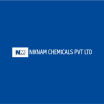Knowde Enhanced TDS
Identification & Functionality
- Chemical Name
- Plastics & Elastomers Functions
- Technologies
Features & Benefits
- Materials Features
- Features
- In flame retarding thermoplastics, the synergistic action between halogenated flame-retardants and antimony trioxide is well known in the plastic industry
- The Izod impact strength and translucency are two key properties that are diminished because of the particle size and pigmentation strength of antimony trioxide
- The loss in translucency limits the range of available color choices because of the high loading required to offset the tinting effect of antimony trioxide
Applications & Uses
- Applications
- Compatible Polymers & Resins
- Applications
- Flame retardant for wide range of plastics, rubbers, paper and textiles
- Catalyst in PET production
- Activator in glass industry
- Flocculant in Titanium Dioxide production
- Paints and Adhesives industries
- Pigments, Ceramic frites
Properties
- Typical Properties
| Value | Units | Test Method / Conditions | |
| A1203 /As | max. 0.06 | % | — |
| A1203 /As | max. 0.06 | % | — |
| cu | max. 0.02 | % | — |
| cu | max. 0.02 | % | — |
| Fe203 /Fe | max. 0.006 | % | — |
| PbO/Pb | max. 0.1 | % | — |
| PbO/Pb | max. 0.1 | % | — |
| Sb203 | min. 95 | % | — |
| SE | max. 0.005 | % | — |
| Whiteness | min. 95 | — | — |
